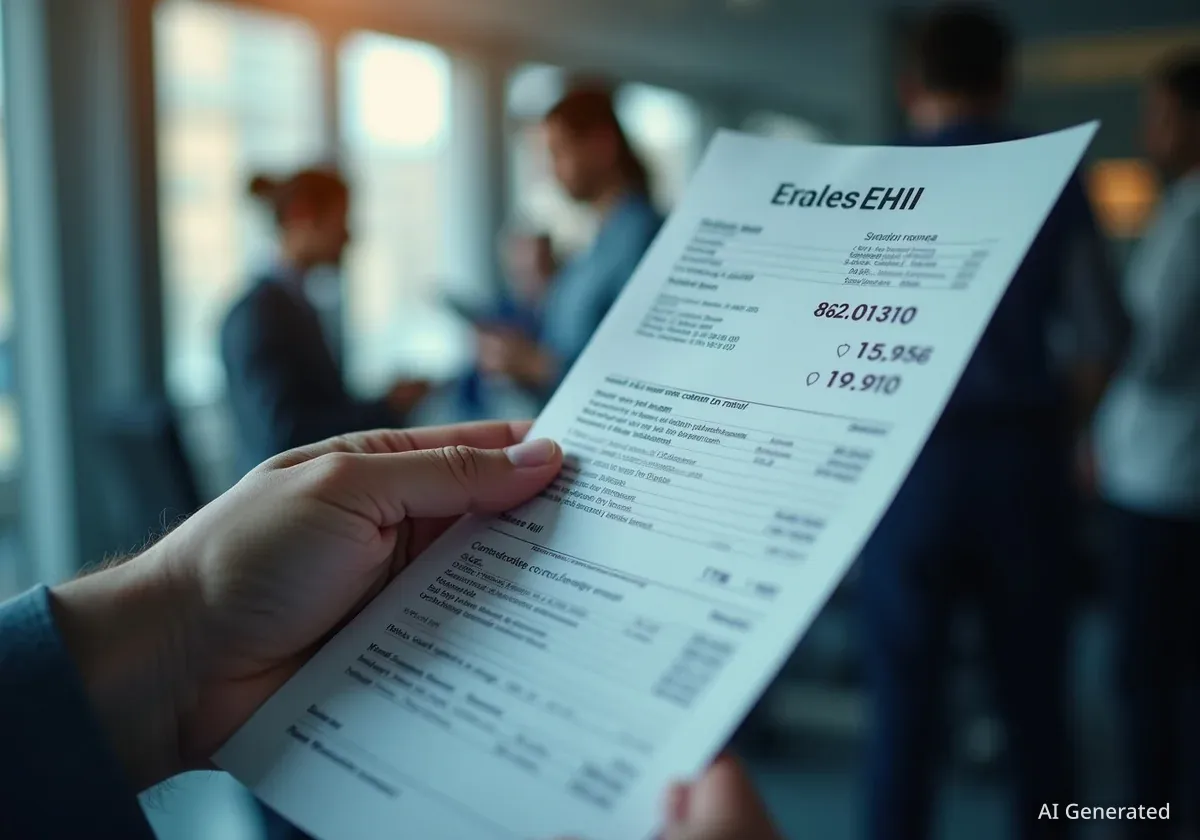The Centers for Medicare and Medicaid Services (CMS) has announced a new pilot program set to launch in six states, including Ohio and Texas. The initiative, known as the Wasteful and Inappropriate Service Reduction (WISeR) Model, will employ artificial intelligence to identify and reduce spending on unnecessary medical services within the Original Medicare program.
Scheduled to run for six years starting in 2026, the model aims to streamline the review process for medical claims, lower costs for the federal health program, and reduce administrative tasks for healthcare providers without altering existing Medicare coverage policies.
Key Takeaways
- New Initiative: The WISeR Model will use AI to review select Medicare services for medical necessity.
- Participating States: The pilot will operate in Ohio, New Jersey, Oklahoma, Texas, Arizona, and Washington.
- Timeline: The program is scheduled to run for six performance years, from January 1, 2026, to December 31, 2031.
- Primary Goal: To decrease spending on low-value services, expedite payment decisions, and ease administrative burdens on providers.
- Scope: The model applies only to Original Medicare beneficiaries and will not affect those enrolled in Medicare Advantage plans.
Understanding the WISeR Model
The Centers for Medicare and Medicaid Services is introducing the Wasteful and Inappropriate Service Reduction (WISeR) Model as a test of enhanced technology in healthcare administration. This six-year initiative will focus on ensuring that payments for certain medical items and services are both timely and appropriate.
The program will be implemented across six states: Ohio, New Jersey, Oklahoma, Texas, Arizona, and Washington. The performance period is set to begin on January 1, 2026, and will conclude on December 31, 2031.
According to CMS, the core objective is to promote safe, evidence-based medical practices for individuals covered by Medicare. By leveraging technology, the model seeks to minimize services that offer little to no clinical benefit, often referred to as low-value care.
What is Original Medicare?
Original Medicare is the traditional fee-for-service health plan managed by the federal government. It consists of Part A (Hospital Insurance) and Part B (Medical Insurance). The WISeR model specifically targets this program and does not apply to Medicare Advantage (Part C), which are plans offered by private companies approved by Medicare.
How AI Technology Will Target Waste
The WISeR Model will partner with technology companies to deploy advanced systems that can analyze medical claims more efficiently. The AI will be used to streamline the review of medical necessity for specific services, moving this assessment earlier in the claims process.
CMS has outlined four primary goals for this technological integration:
- Reduce the utilization of inappropriate or wasteful services.
- Lower overall spending within the Original Medicare program.
- Expedite decision-making on coverage determinations.
- Ease the administrative burden currently placed on healthcare providers.
The technology will assess claims for services that have a known risk of being delivered inappropriately or have previously been associated with fraud, waste, or abuse. This proactive approach is designed to prevent improper payments before they occur, rather than recovering them after the fact.
Specific Services Under Review
While the program will not be applied to all medical procedures, CMS has identified several examples of items and services that will be subject to this enhanced review. These are often procedures where evidence suggests they may provide limited benefit in certain clinical situations.
Examples of targeted services include:
- Knee arthroscopy for patients with knee osteoarthritis.
- The use of certain skin and tissue substitutes.
- The surgical implantation of electrical nerve stimulators.
By focusing on these types of services, the model aims to ensure that Medicare beneficiaries receive care that is supported by strong clinical evidence, thereby improving the quality and value of the healthcare provided.
Program Limitations and Exclusions
The WISeR Model has clearly defined boundaries. It will not change existing Medicare coverage or payment policies. Furthermore, several categories of services are explicitly excluded from the program to protect patient safety and access to critical care, including inpatient-only services, emergency room services, and any services that could pose a substantial risk to patients if delayed.
Impact on Patients and Providers
For the millions of Americans enrolled in Original Medicare in the six participating states, the program is designed to operate behind the scenes. CMS has stated that WISeR will not change their Medicare coverage or payment policies. The primary change will be in how claims are processed and reviewed by the system.
For healthcare providers, the model is intended to reduce administrative complexities. By providing clearer, faster decisions on medical necessity, the system could lessen the time and resources spent on paperwork and claim disputes. This allows medical professionals to focus more on patient care and less on navigating bureaucratic hurdles.
"The model will encourage safe and evidence-based best practices for treating people with Medicare," the Centers for Medicare and Medicaid Services stated in its announcement, highlighting the dual goals of cost savings and improved care quality.
It is important to reiterate that individuals with Medicare Advantage plans will not be affected by this pilot program. The WISeR Model is exclusively for the fee-for-service Original Medicare population in the designated states.
As the program prepares for its 2026 launch, CMS and its technology partners will work to refine the AI systems to ensure they are accurate and effective. The results from this six-year test will likely inform future efforts to modernize Medicare and make the program more sustainable for generations to come.





